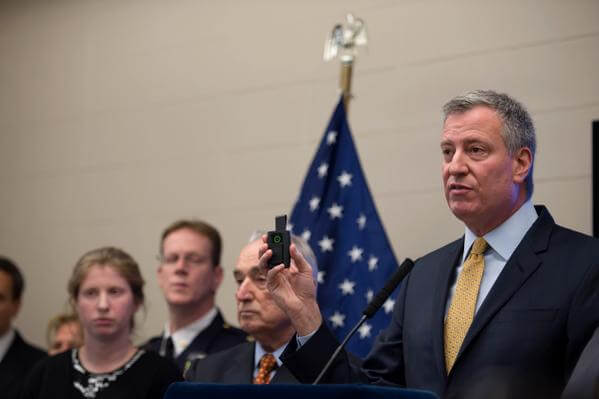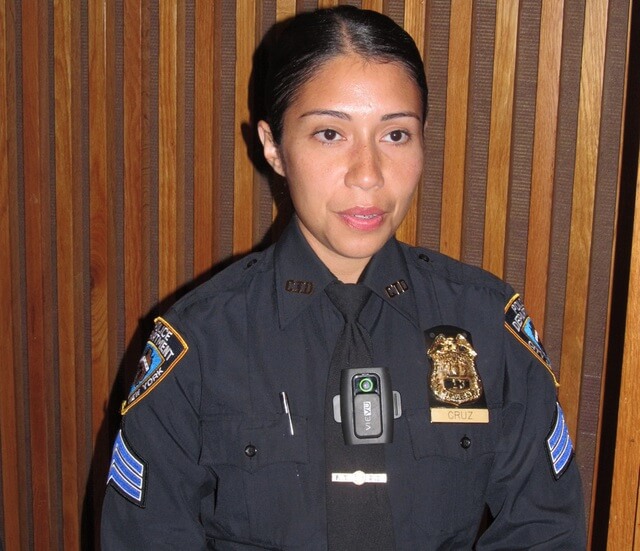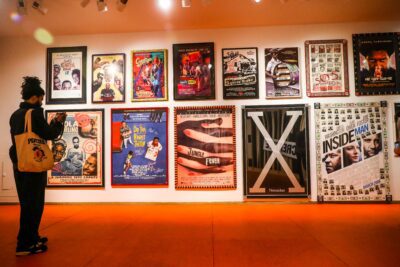Police Commissioner and de Blasio Unveil Pilot Program For Cop Cams

(Photo: Mayor’s Office Twitter)
Mayor de Blasio and Police Commissioner Bratton appeared side-by-side at a press conference today to announce the launch of a pilot program that will outfit cops at select precincts (more specifically, those with the highest recorded rates of stop-and-frisk incidents) with body cameras. The initiative follows a ruling made last year by a federal judge, Shira Scheindlin, who also declared stop and frisk to be a “policy of indirect racial profiling.” As a part of the ruling, Scheindlin appealed for better oversight of the police, and suggested the use of body cameras as a means.
In light of the death of Michael Brown, and the exoneration of the police officer who killed him, in addition to recent incidents of police brutality in New York City (including the choking death of Eric Garner by an NYPD officer, and an incident that occurred just this week in Bushwick when a young black man was cracked over the head with a nightstick for hopping the turnstiles, according to witnesses), the program is clearly an attempt to make amends between the public and the cops.
At the press conference today, De Blasio said that he and Bratton have “spoken continuously about the need to bring police and community together.” The Mayor declared the initiative one that would be yet “another way to get information, to create transparency, to create accountability.”
The city clearly has other incentives to activate a program as costly as this one. The New York Times reported that, in the last five years, the city has shelled out $1 billion for cases against the NYPD.
Considering all the especially awful garbage that’s been going down recently (see: um, Ferguson and the shooting death of a 12-year-old boy at the hands of a Cleveland police officer, as the most obvious and recent examples) and the increasing visibility of police brutality (particularly against people of color), the program might seem like a welcome one. However, in seeing how the cameras will operate, the initiative leaves a lot to be desired.
As Gothamist reported back in September, the cameras (worn on the officer’s lapel) do not pick up audio, and the record function must be activated by the police officer.


(Photo: Gothamist)
Because the ball still remains in the cops’ court–they choose whether or not, when, and where to activate the record feature–calling this a mechanism to enforce transparency is maybe going a little too far.
This program relies at least partially on the false assumption that video representations can be taken as fact. Though a lapel camera may not be nearly as malleable as traditional cameras, subjectivity is still an inherent part of the relationship between humans and cameras. Where the officer stands and who she or he is looking at during an encounter and even the angle and lighting can hold serious sway in how viewers perceive the resulting images.
Of course, it’s important to remember than in many police brutality cases, videos taken by bystanders have been submitted as evidence (including in the case involving the death Eric Garner). Though they may become fodder for accusations of injustice and important pieces of evidence used against the police, the photographs and videos weren’t necessarily taken with that purpose in mind. They are often taken by bystanders out of fear, confusion, and panic. The intention is to take them to higher authorities or the public as a means of sharing the experience.
Police body cameras, however, will be used when a cop feels they are in a threatening situation or one that might end in a dispute. If a cop is already prone to misbehavior, racial profiling, and misconduct, what on earth should lead us to believe they would be willing to activate a video camera and record themselves engaging in such behavior?
Police officers will only activate cameras in the instances when they won’t be incriminating themselves. And I promise to eat every pair of shoes I own if it turns out the NYPD is keen to share these cop videos with the public. But wouldn’t that be the truly “transparent” thing to do? Though well-intentioned, it seems that this program could end up being more about exonerating the police than it is about protecting the public.
You might also like 



















